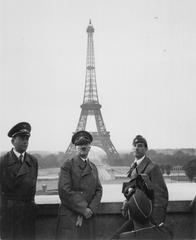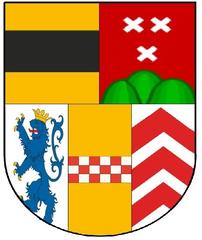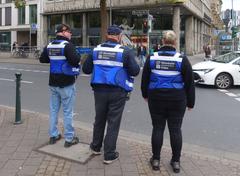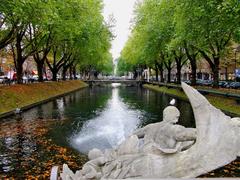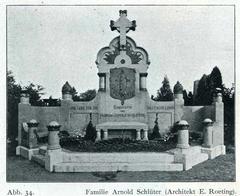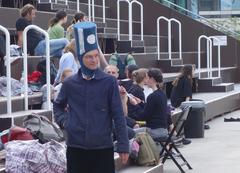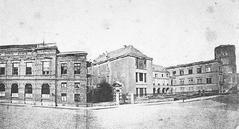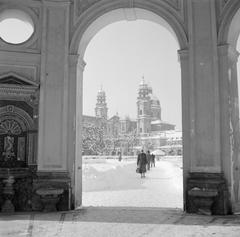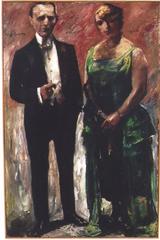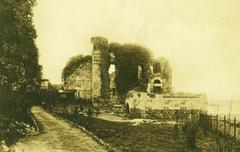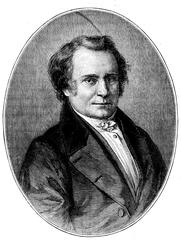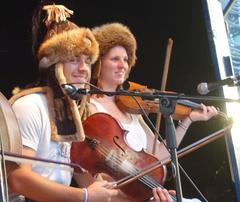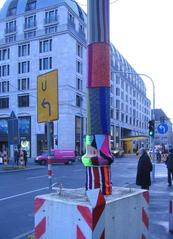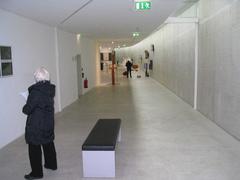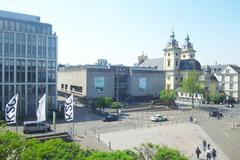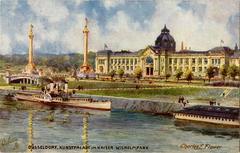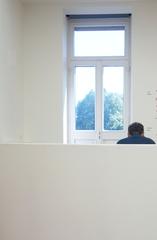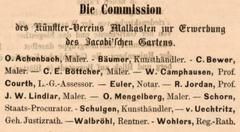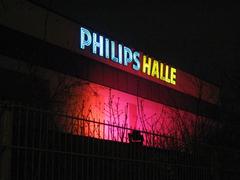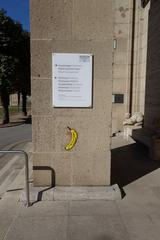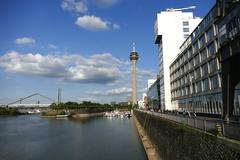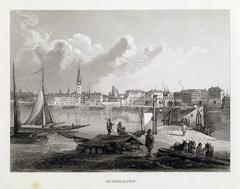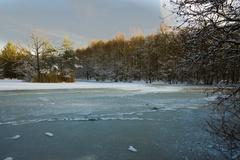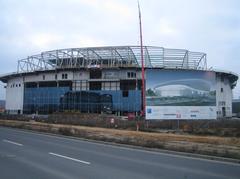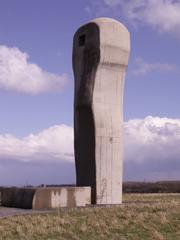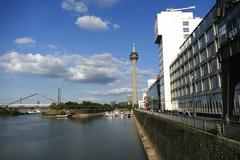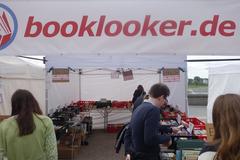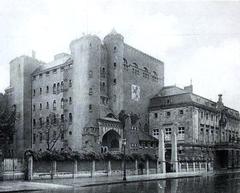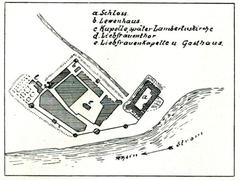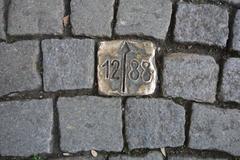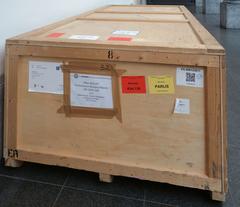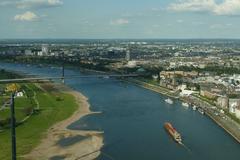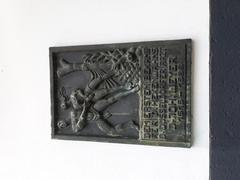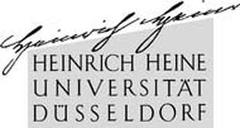
Visiting the Commerzbank Administration Building in Düsseldorf, Germany: A Comprehensive Guide
Date: 03/07/2025
Introduction
Nestled in the heart of Düsseldorf’s vibrant commercial district, the Commerzbank Administration Building stands as an enduring testament to postwar innovation, architectural excellence, and Germany’s economic resurgence. Designed by the acclaimed architect Paul Schneider-Esleben and constructed between 1962 and 1965, this landmark is celebrated as Germany’s first high-rise to feature an elemental curtain wall façade. Its glass and steel composition, emblematic of the optimism of the Wirtschaftswunder era, not only revolutionized the city’s skyline but also set new standards in modernist architecture.
Although primarily serving as a corporate office, the building’s historic significance and adaptive reuse—as a contemporary hotel in recent years—continue to attract architecture aficionados, history enthusiasts, and curious travelers. This guide delivers detailed insights into its architecture, historical context, visitor access, and nearby attractions to help you plan a memorable visit. For the latest updates on tours and special events, consult Düsseldorf’s tourism office, Commerzbank’s historical society, or explore curated walking tours via the Audiala app, which connects visitors to Germany’s architectural heritage (HPP Architekten; Visit Düsseldorf; Germany Travel Blog).
Contents
- Why Visit the Commerzbank Administration Building?
- Architectural Significance
- Historical Context and Urban Placement
- Curtain Wall Façade and Structural Innovation
- Adaptive Reuse and Preservation
- Influence on Düsseldorf’s Urban Identity
- Technical and Environmental Upgrades
- Protected Status and Recognition
- Visitor Information
- Visiting Hours & Access
- Getting There & Accessibility
- Tickets & Guided Tours
- Practical Travel Tips
- Nearby Attractions & Photographic Spots
- Special Events & Guided Tours
- Frequently Asked Questions (FAQ)
- Summary & Final Tips
- Sources and Further Reading
Why Visit the Commerzbank Administration Building?
The Commerzbank Administration Building is not simply an office block—it’s a milestone in German postwar architecture and a symbol of Düsseldorf’s economic revival. Its pioneering curtain wall façade, open-plan interiors, and iconic “floating” structure capture the spirit of transparency and progress that defined the 1960s. Whether you’re fascinated by urban history, modernist design, or simply exploring Düsseldorf’s cityscape, this building offers a unique, photogenic, and educational experience.
Architectural Significance
Historical Context and Urban Placement
Constructed during the early 1960s, the building reflects West Germany’s rapid economic recovery and urban transformation. Its location in Düsseldorf’s bustling commercial heart, originally linked to the main Commerzbank building via a glass bridge, positioned it at the core of the city’s financial and architectural evolution (HPP Architekten).
Curtain Wall Façade and Structural Innovation
The building was the first in Germany to utilize an elemental curtain wall façade. Prefabricated anodized aluminum panels with rounded windows were attached directly to the structure, eliminating the need for extra framing. This innovation streamlined construction, enhanced natural light, and set a precedent for subsequent German skyscrapers. The exposed concrete frame supports a striking 13-storey tower that cantilevers over a drive-in forecourt, creating the illusion of a building floating above street level—an architectural nod to the era’s embrace of car culture and urban dynamism (HPP Architekten).
Adaptive Reuse and Preservation
In 2021, HPP Architekten oversaw the building’s transformation into a contemporary hotel, preserving its original character while upgrading the structure for modern use. This adaptive reuse project received the “Hotelimmobilie des Jahres 2021” award and demonstrated how mid-century architecture can be revitalized without sacrificing historic integrity (HPP Architekten).
Influence on Düsseldorf’s Urban Identity
The Commerzbank Administration Building is a key contributor to the city’s modernist legacy and urban identity, standing alongside landmarks like the Dreischeibenhaus and Kö-Bogen (Time Out Düsseldorf). Its transparent façade, open public spaces, and innovative features embody Düsseldorf’s reputation for architectural diversity and forward-thinking design.
Technical and Environmental Upgrades
During restoration, the original façade panels were refurbished and reinstalled to maintain the building’s historic appearance while improving energy efficiency and comfort. Modern interior reconfigurations and environmental upgrades ensure the building meets contemporary sustainability standards (HPP Architekten).
Protected Status and Recognition
Recognized as an architectural and historical monument since 1998, the building is under listed protection. Any modifications or upgrades must respect Paul Schneider-Esleben’s visionary design (HPP Architekten).
Visitor Information
Visiting Hours & Access
- Interior Access: The building now operates as a hotel, allowing public access to the lobby and select ground-floor spaces from 7:00 AM to 11:00 PM daily. Entry to upper floors or office areas is restricted.
- Exterior Viewing: The façade and surrounding public spaces are accessible at all times, making it easy to admire the architecture from the street.
Getting There & Accessibility
-
Public Transit: The building is centrally located and easily reached via Düsseldorf Hauptbahnhof (main train station), trams, S-Bahn, and local buses. Closest stops include Berliner Allee and Königsallee.
-
On Foot: Major attractions like Königsallee, the Altstadt (Old Town), Hofgarten park, and the Rhine promenade are within easy walking distance.
-
By Car/Bicycle: Public parking garages and bicycle racks are available nearby.
-
Accessibility: The building and surrounding public areas are wheelchair accessible, with elevators and ramps installed during renovation (Visit Düsseldorf).
Tickets & Guided Tours
- Admission: No ticket is required for viewing the exterior or accessing public lobby spaces.
- Guided Tours: Interior tours are rare and typically only available during special events such as the annual “Tag der Architektur” (Day of Architecture). These are usually free but may require advance registration. Check with the Düsseldorf tourism office or Commerzbank Düsseldorf branch for announcements.
Practical Travel Tips
- Photography: The building’s reflective glass and clean lines are best photographed in morning or late afternoon light. Tripods are permitted outdoors but may attract security attention near entrances.
- Safety: Düsseldorf’s city center is safe; exercise normal precautions against pickpocketing in busy areas.
- Language: German is the primary language, but English is widely spoken in central areas, hotels, and tourist sites.
- Payments: Carry some cash (euros) as small cafés and shops may prefer it, but most major cards are accepted.
Nearby Attractions & Photographic Spots
- Königsallee: Düsseldorf’s famous luxury shopping boulevard, offering high-end boutiques and scenic canal views.
- Rhine River Promenade: Ideal for picturesque strolls and cityscape photography.
- Altstadt (Old Town): Known for its vibrant nightlife, historic pubs, and cultural sites.
- K20 Museum: A leading modern art museum within walking distance.
- Kö-Bogen: A modern architectural highlight designed by Daniel Libeskind.
- Hofgarten: The city’s main park, perfect for relaxation.
Special Events & Guided Tours
The Commerzbank Administration Building occasionally opens for public tours and architectural events, notably during “Tag der Architektur.” These guided tours provide exclusive insights into its design and history. For upcoming dates and registration, monitor the Düsseldorf tourism office and Commerzbank Düsseldorf branch.
Frequently Asked Questions (FAQ)
Q: Can I enter the Commerzbank Administration Building as a tourist?
A: Entry is limited to the lobby and public ground-floor areas. Interior tours are only available during special events.
Q: Are guided tours offered regularly?
A: No, but special tours are occasionally organized during events like “Tag der Architektur.” Check local listings for updates.
Q: Is the building wheelchair accessible?
A: Yes, the building and surrounding area are fully accessible for wheelchairs.
Q: Are there nearby attractions to combine with my visit?
A: Yes. Königsallee, the Rhine promenade, Altstadt, and museums like the K20 are all nearby.
Q: Can I take photographs of the building?
A: Yes, photography from public spaces is allowed and encouraged.
Summary & Final Tips
The Commerzbank Administration Building is a must-see for anyone interested in modernist architecture, urban history, or Düsseldorf’s postwar transformation. Its innovative curtain wall façade, floating design, and sensitive adaptive reuse exemplify the harmonious blend of heritage and contemporary functionality. While public access to the interior is limited, its striking exterior and location amidst Düsseldorf’s most dynamic district make it a highlight of any city exploration. To enhance your experience, pair your visit with nearby attractions, and stay alert for special events granting rare interior access. For guided tours and insider insights, download the Audiala app and follow local tourism updates (HPP Architekten; Visit Düsseldorf; Germany Travel Blog; Time Out Düsseldorf).
Sources and Further Reading
- Commerzbank Administration Building Düsseldorf: History, Architecture, Visiting Hours, and Tickets, 2025, HPP Architekten
- Commerzbank Administration Building Düsseldorf: Visiting Hours, History & Tourist Guide, 2025, Visit Düsseldorf
- Visiting the Commerzbank Administration Building, Düsseldorf: Hours, Tickets, and Practical Tips, 2025, Germany Travel Blog
- The Most Beautiful Buildings in Düsseldorf, 2025, Time Out Düsseldorf



